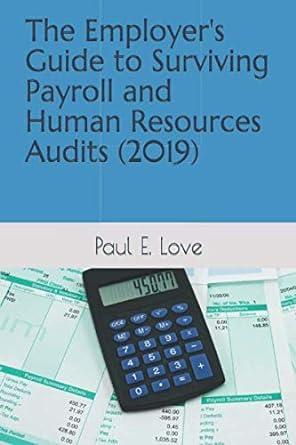Question
The American Battery Company has two divisions, the Electrical Division and the Assembly Division. Both divisions have the full authority to make purchasing and selling
The American Battery Company has two divisions, the Electrical Division and the Assembly Division. Both divisions have the full authority to make purchasing and selling decisions of their division output to both outsiders and the other division. (A highly decentralized structure) Each Division operates as a separate profit center and is being evaluated on the basis of the divisions reported profit. The Electrical Division makes the battery cores (inside components) of the battery, and the Assembly Division places those cores in a decorative customized casing to sell to customers. The Electrical Division capacity is 350,000 cores which are sold to both outside parties and the Assembly Division. They can sell the core to outsiders for $150 per unit. The production costs per battery incurred by the Electrical Division are as follows: Direct materials $ 40 Direct manufacturing labor 30 Variable factory overhead 12 Fixed factory overhead 40 Total $122 The Assembly Division can buy the cores from an outside source for $145. The division adds $25 of incremental costs, and then sells the assembled battery for $190.
QUESTION:
Assuming the Electrical Division has sufficient capacity to supply the Assembly Division. The Electrical Division is located in Mexico with a tax rate of 20%, and the Assembly Division is located in the US with a tax rate of 40%. US and Mexican tax authorities only allow for transfer prices to be set between the full cost of $122 and the selling price of $150. Only considering tax consequences, should the company set the transfer price at $122 or $150? Why? A) $122, because at a transfer price of $122, the companys total amount of tax paid per unit in both countries will be $17.20 less. B) $150, because at a transfer price of $150, the companys total amount of tax paid per unit in both countries will be $17.20 less. C) $122, because at a transfer price of $122, the companys total amount of tax paid per unit in both countries will be $5.60 less. D) $150, because at a transfer price of $150, the companys total amount of tax paid per unit in both countries will be $5.60 less.
Step by Step Solution
There are 3 Steps involved in it
Step: 1

Get Instant Access to Expert-Tailored Solutions
See step-by-step solutions with expert insights and AI powered tools for academic success
Step: 2

Step: 3

Ace Your Homework with AI
Get the answers you need in no time with our AI-driven, step-by-step assistance
Get Started


